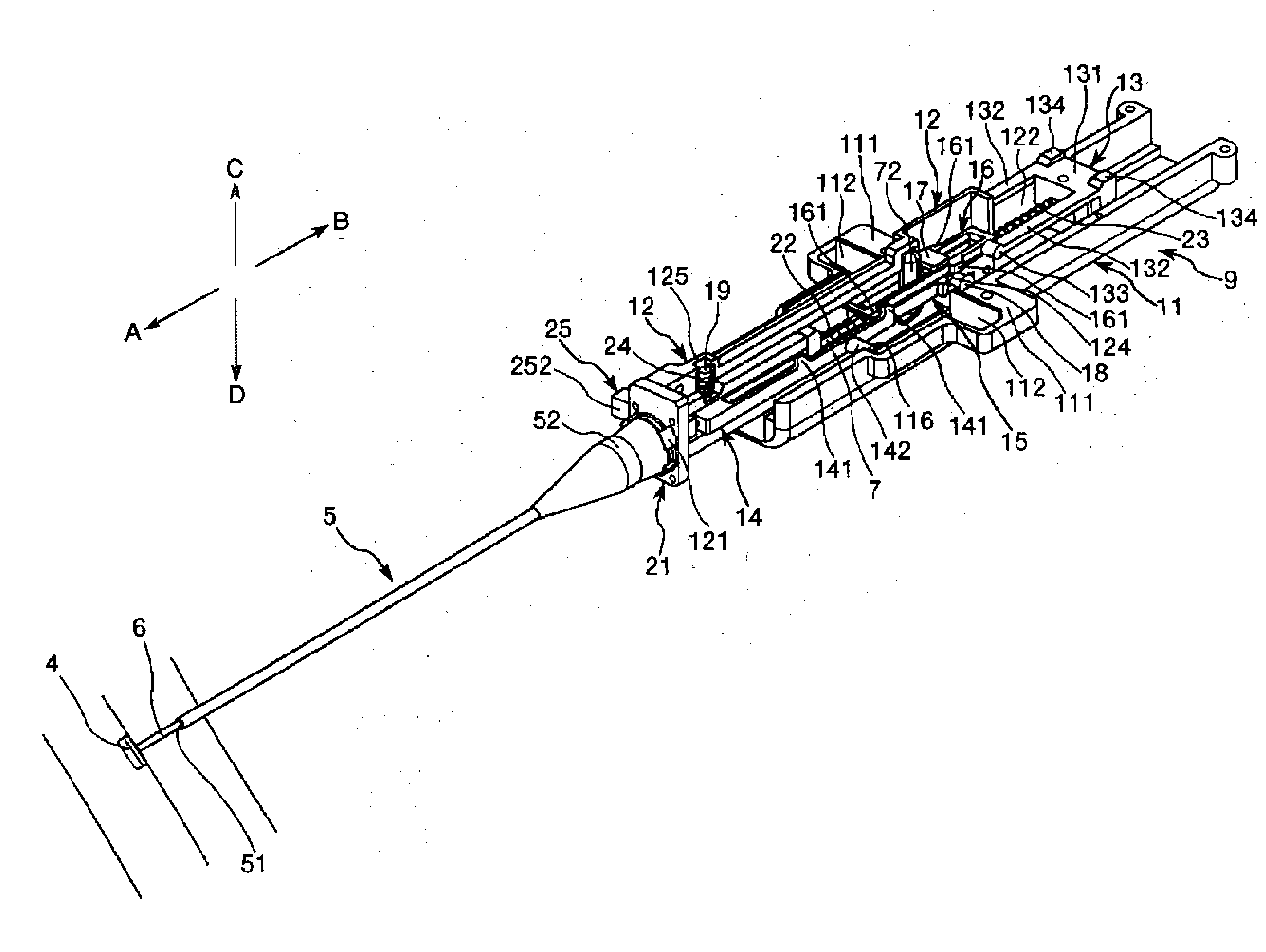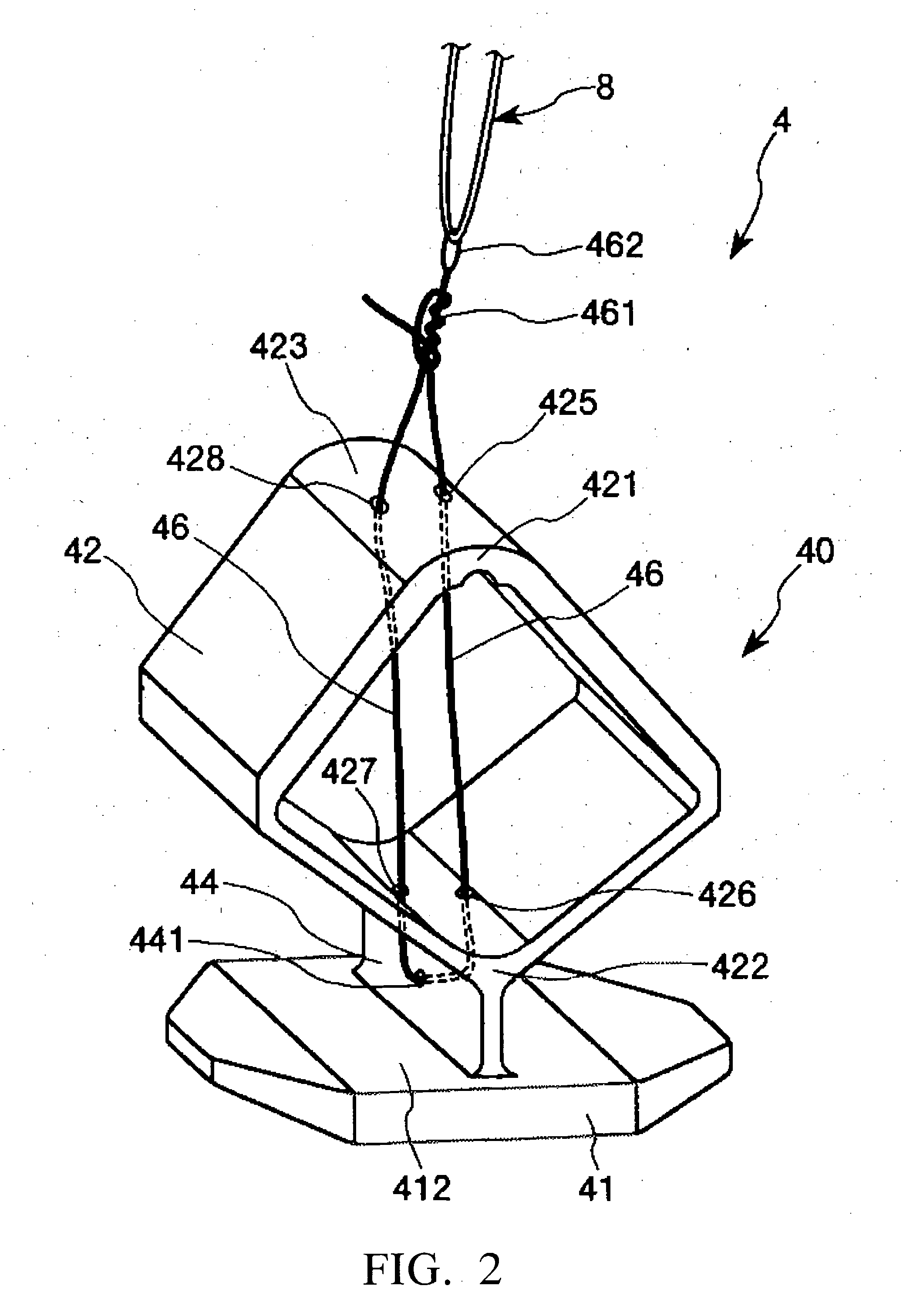Tissue closing device
- Summary
- Abstract
- Description
- Claims
- Application Information
AI Technical Summary
Benefits of technology
Problems solved by technology
Method used
Image
Examples
first embodiment
[0048]FIG. 1 shows perspective views showing a first embodiment of the tissue closing device, in which FIG. 1(a) A is an overall perspective view, and FIG. 1(b) is a perspective view showing the inner portion side of an upper half of a casing FIG. 2 is a perspective view of a closure in the tissue closing device shown in FIG. 1FIG. 3 is an illustration of one example of a knot of the closure in the tissue closing device shown in FIG. 1FIG. 4 is an illustration of another example of the knot of the closure in the tissue closing device shown in FIG. 1FIG. 5 is an exploded perspective view (members (component parts)) of the tissue closing device shown in FIG. 1FIG. 6 shows perspective views of a distal end portion of the tissue closing device shown in FIG. 1, in which FIG. 6(a) is an outlook view, and FIG. 6(b) as a perspective drawing (showing the condition where a cover tube is removed) FIG. 7 is a perspective view showing a thread support portion, a pin and a thread in the tissue cl...
second embodiment
[0162]Now, a second embodiment of the tissue closing device according to the present invention will be described below
[0163]FIG. 26 is a perspective view of the second embodiment (locked condition) of the tissue closing device according to the present invention, FIG. 27 is a sectional view of a part on the distal side of a handling portion in the tissue closing device shown in FIG. 26, FIG. 28 is a perspective view of the second embodiment (unlocked condition) of the tissue closing device according to the present invention, and FIG. 29 is a sectional view of a part on the distal side of the handling portion in the tissue closing device shown in FIG. 28
[0164]Incidentally, for convenience of description, in FIGS. 26 to 29, the direction of arrow A will be referred to as “distal”, the direction (hand side) of arrow B as “proximal”, the direction of arrow C as “upper”, and the direction of arrow D as “lower”, in the following description
[0165]Now, the tissue closing device 1 according t...
third embodiment
[0176]Now, a third embodiment of the tissue closing device according to the present invention will be described below
[0177]FIG. 30 is a perspective view illustrating the third embodiment of the tissue closing device according to the present invention, FIG. 31 is an exploded perspective view (showing the members (component parts)) of the tissue closing device shown in FIG. 30, FIGS. 32(a) and 32(b) show a thread support portion, a pin, and a thread in the tissue closing device shown in FIG. 30, FIG. 32(a) is a perspective view, and FIG. 32(b) is a schematic plan view Besides, FIGS. 32(a) to 39(b) are perspective views for illustrating the operations (movements) of the tissue closing device shown in FIG. 30, in which 32(a), 33(a), 34(a), 35(a), 36(a), 37(a), 38(a), and 39(a) in each figure shows the handling portion side, and 32(b), 33(b), 34(b), 35(b), 36(b), 37(b), 38(b), and 39(b) shows the distal end portion side
[0178]Incidentally, in FIGS. 30 and 33(a) to 39(a), an upper cover of...
PUM
 Login to View More
Login to View More Abstract
Description
Claims
Application Information
 Login to View More
Login to View More - R&D
- Intellectual Property
- Life Sciences
- Materials
- Tech Scout
- Unparalleled Data Quality
- Higher Quality Content
- 60% Fewer Hallucinations
Browse by: Latest US Patents, China's latest patents, Technical Efficacy Thesaurus, Application Domain, Technology Topic, Popular Technical Reports.
© 2025 PatSnap. All rights reserved.Legal|Privacy policy|Modern Slavery Act Transparency Statement|Sitemap|About US| Contact US: help@patsnap.com



